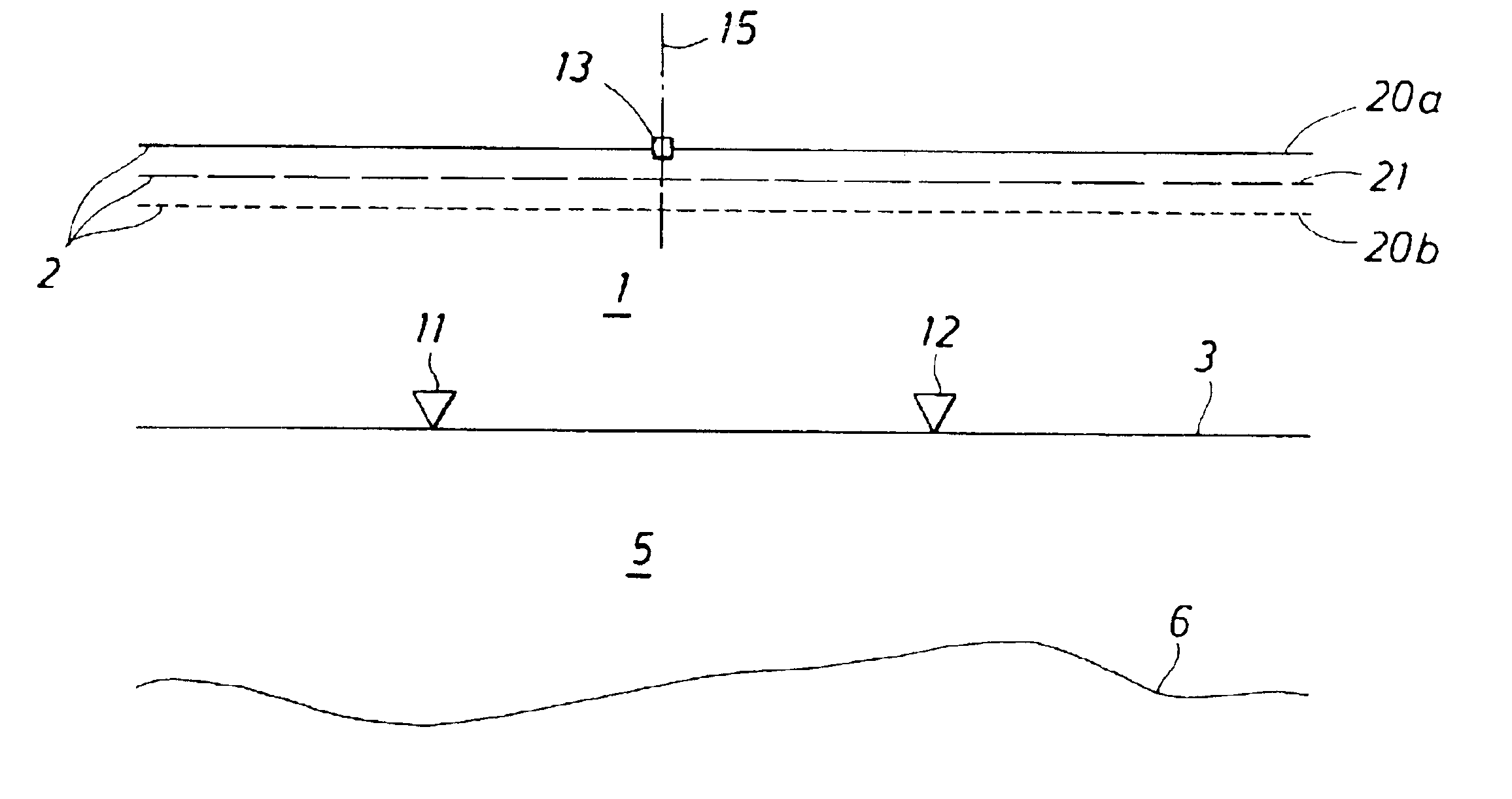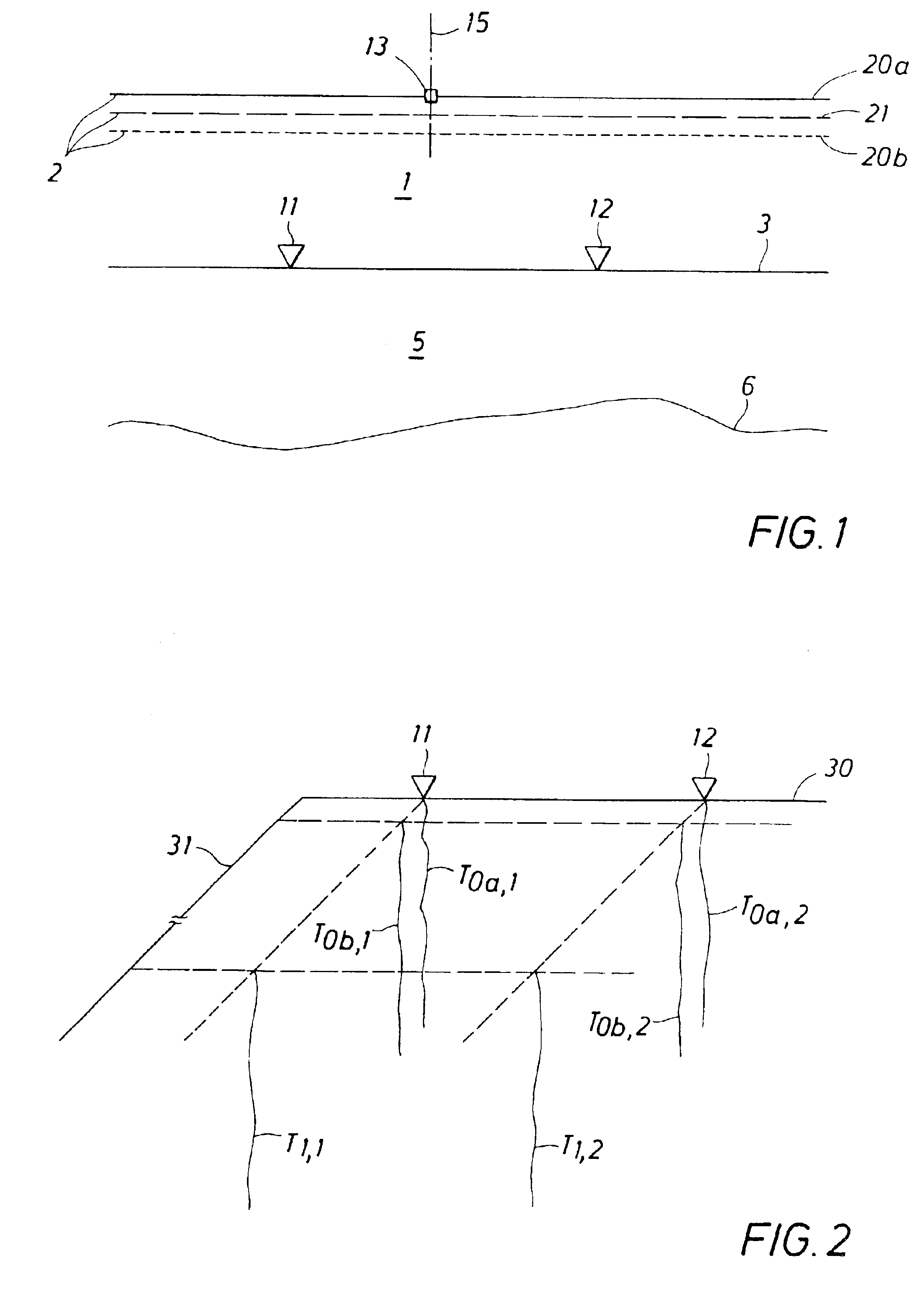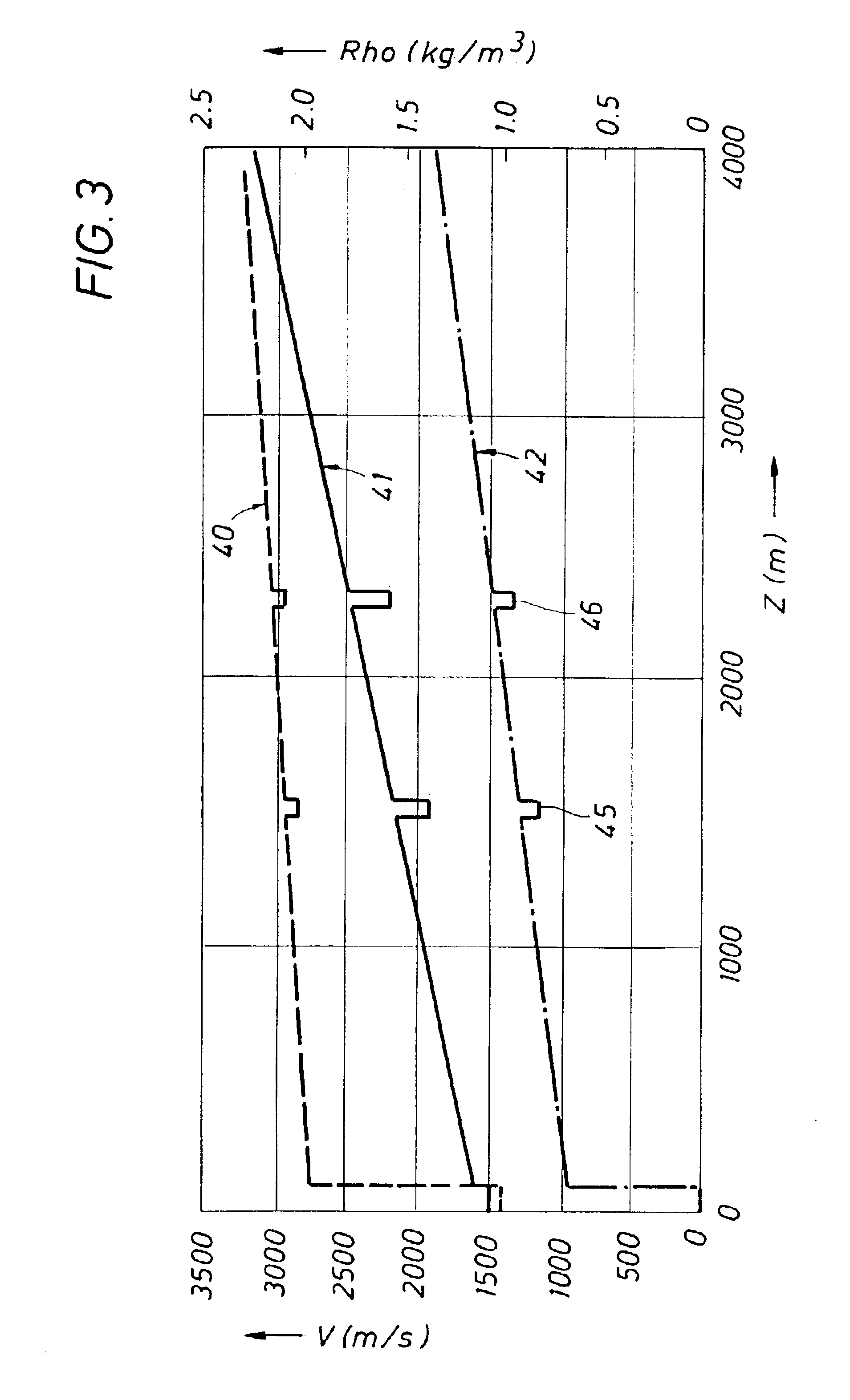Marine time-lapse seismic surveying
- Summary
- Abstract
- Description
- Claims
- Application Information
AI Technical Summary
Benefits of technology
Problems solved by technology
Method used
Image
Examples
Embodiment Construction
[0021]Reference is now made to FIG. 1. The method according to the present invention is a method of carrying out at sea a time-lapse survey of the subsurface. In FIG. 1 is shown schematically a body 1 of water representing the sea bounded by a sea surface 2 and a sea bottom 3, and the subsurface 5 below the sea bottom 3. Which subsurface 5 contains at least one reflector 6.
[0022]In the method according to the invention a seismic receiver system comprising at least one seismic receiver is located at a predetermined position. In FIG. 1 the seismic receiver system comprises two seismic receivers 11 and 12, and the receiver location having a predetermined position is at the sea bottom 3.
[0023]The first step of the method is positioning a seismic source 13 at a source location having a predetermined position 15. The position 15 is the horizontal position of the source, which is the longitude-latitude position of the seismic source 13. The horizontal position of the source is schematicall...
PUM
 Login to View More
Login to View More Abstract
Description
Claims
Application Information
 Login to View More
Login to View More - R&D
- Intellectual Property
- Life Sciences
- Materials
- Tech Scout
- Unparalleled Data Quality
- Higher Quality Content
- 60% Fewer Hallucinations
Browse by: Latest US Patents, China's latest patents, Technical Efficacy Thesaurus, Application Domain, Technology Topic, Popular Technical Reports.
© 2025 PatSnap. All rights reserved.Legal|Privacy policy|Modern Slavery Act Transparency Statement|Sitemap|About US| Contact US: help@patsnap.com



